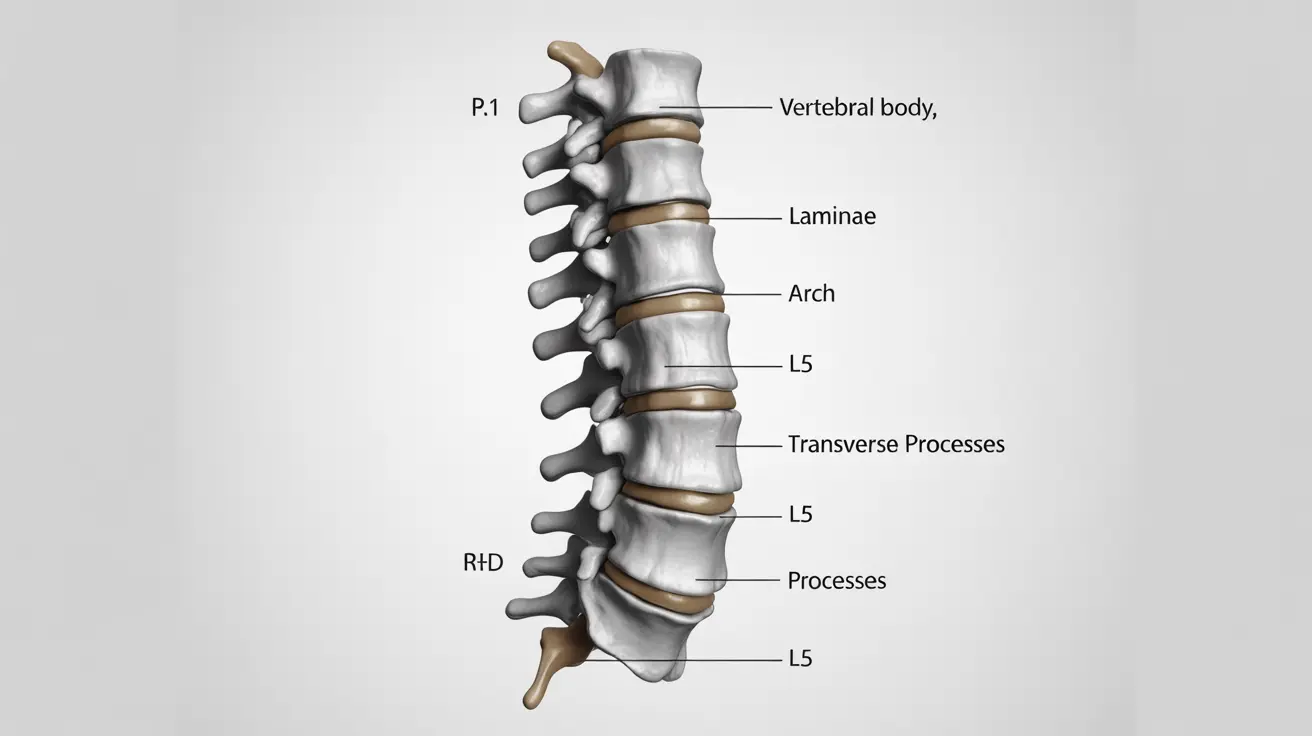The lumbar vertebrae form a crucial part of your spine, consisting of five large bones in your lower back. These vertebrae, labeled L1 through L5, play essential roles in supporting your body weight, enabling movement, and protecting vital nerve structures. Understanding how these vertebrae are labeled and function can help you better comprehend back pain and spinal health.
Anatomy and Labeling of the Lumbar Vertebrae
The lumbar vertebrae are numbered from top to bottom, with L1 being the uppermost vertebra and L5 connecting to the sacrum. Each vertebra has distinct characteristics that make it uniquely suited for its position and function in the spine:
- L1: The smallest of the lumbar vertebrae, transitioning from thoracic to lumbar spine
- L2-L3: Gradually increasing in size to handle greater weight
- L4: Features a more robust vertebral body
- L5: The largest and most weight-bearing vertebra
Structure and Support Functions
Each lumbar vertebra consists of several key components that work together to provide stability and support:
- Vertebral body: The large, weight-bearing portion
- Vertebral arch: Forms the protective canal for the spinal cord
- Articular processes: Enable controlled movement between vertebrae
- Transverse processes: Attachment points for muscles and ligaments
- Spinous process: The bony projection you can feel through your skin
Biomechanics and Movement
The lumbar spine's design allows for several essential movements while maintaining stability:
- Forward bending (flexion)
- Backward bending (extension)
- Side bending (lateral flexion)
- Limited rotation
Protection of Neural Elements
The lumbar vertebrae create a protective housing for important neural structures:
- The spinal canal contains the spinal cord and nerve roots
- Intervertebral foramina provide exit points for spinal nerves
- Natural curves help absorb shock and distribute forces
Common Medical Conditions
Several conditions can affect the lumbar vertebrae:
- Herniated discs
- Spinal stenosis
- Degenerative disc disease
- Spondylolisthesis
- Fractures
Frequently Asked Questions
What are the five lumbar vertebrae and how are they labeled in the spine?
The five lumbar vertebrae are labeled L1 through L5, starting from the top and moving downward. L1 connects to the thoracic spine, while L5 joins with the sacrum.
What is the role of the lumbar vertebrae in supporting body weight and allowing movement?
The lumbar vertebrae support most of your upper body weight and enable various movements including bending forward, backward, and to the sides. Their large size and strong structure make them ideal for these weight-bearing and mobility functions.
How can I identify the differences between the individual lumbar vertebrae L1 to L5?
The lumbar vertebrae gradually increase in size from L1 to L5, with L5 being the largest. Each vertebra has unique anatomical features, including different sizes of vertebral bodies and varying angles of their processes.
What common medical issues affect the lumbar vertebrae and how do they cause back pain?
Common issues include herniated discs, spinal stenosis, and degenerative conditions. These problems can cause pain by compressing nerves, creating inflammation, or disrupting normal spine mechanics.
How do the lumbar vertebrae protect the spinal cord and nerves in the lower back?
The lumbar vertebrae form a protective canal that houses the spinal cord and nerve roots. Their structure includes various features like the vertebral arch and intervertebral foramina that create safe passages for nerves while maintaining spine stability.




